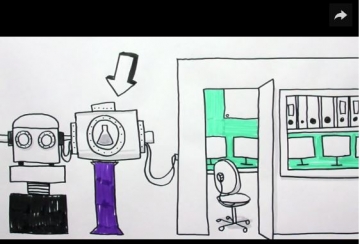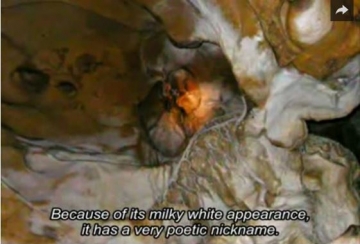
DIFFABS : Combining X-Ray diffraction and absorption to study a large variety of materials
The range of instrumental techniques that can be used on this line concerns numerous sectors of fundamental research and finalized applied research (oil industry, nuclear field , metallurgy) among which the science of materials and chemistry hold a predominant position. In particular, in situ studies of the transformations in materials at ultra-high temperature will be the domain of excellence of this line. The interest of coupled absorption, or coupled - diffraction measurements on powders or monocristalssingle crystals, is to ensure that both experiments are carried out on the same zone of the sample, in absolutely identical physico-chemical conditions (temperature, pressure, reactive atmosphere around the sample), which is very important for establishing correlations between the information provided by both types of measurements in the case of complex materials or materials under extreme conditions.
Technical data
3-23 keV for standard beam mode
3-19 keV for microbeam mode
∆E/E ~ 10-4
Bending magnet
1.1014 ph/s/0.1%bw @ 8 keV / 500mA ring current
4. 1013 ph/s/0.1%bw @ 20 keV / 500mA ring current
- Two bendable mirrors for harmonics rejection and meridian (vertical) focusing
- Si(111) Double crystal monochromator (DCM) with bendable 2nd crystal for sagital (horizontal) focusing
- Kirkpatrick-Baez (KB) mirrors for microbeam (~ 10μm) mode
- Circular Fresnel Zone Plate (sub-10μm beam size)
- 6+2 circles diffractometer (kappa geometry + analyzer crystal). Heavy load and cumbersome sample environment can be accommodated.
- Several heating systems :
(laser heating + levitating chamber (study of melting of glasses, oxides and ceramics up to T ~3000 °C)
conventional furnaces for powders, thin films and bulk (up to
1300°C)
- compact Peltier stage (T = -20°C to +50 °C)
- biaxial tensile machine for stretchable thin films
- optical microscope (sample visualisation and pre-alignment) for μbeam experiments
- several 1012 ph/s @ 8kev / 500 mA ring current (~250x300μm2 FWHM, 0.24 x 3.5 mrad2, vert. × horiz.) with Si(111) DCM and at
- 109-1010 ph/s @ 8kev / 500 mA ring current (~10x10μm2 FWHM, 2 x 1 mrad2, vert. × horiz.) with KB [still to be optimized]
- Zero- dimensional (YAP or LaCl3 scintillators)
- Zero- dimensional (Avalanche Photo Diode, APD)
- thin Si diodes (I0 monitors),
- diodes (transmitted beam) for X-ray absorption experiments
- 4-element SDD: silicon drift detector for X-ray fluorescence,
- 2D Cameras (XPAD, MAR345 image plate, …) on-loan basis from Detectors Group, shared with other beamlines.
Scientific Opportunities
| Materials Science | - in-situ studies of mechanical properties of materials (crystalline metallic layers, multilayers, polymers, …) under bi-axial tensile stress. - in-situ structural studies of glasses, oxides and ceramics at very high temperatures (by XRD and XAS combination) - phase transitions on different materials - 1beam studies (local probe) for structural properties : 1XRD, 1XAS, 1XRF and combination |
|---|---|
| Biology, Biomaterials |
- Pathological calcifications |
| (Semiconductor) nanostructures |
- local properties in lithographed semiconductor epitaxial thin films, quantum wells/wires/dots, nanostructures (Laterally resolved High resolution XRD by using x-ray focused beams). |
| Soft condensed matter |
- in-situ studies of mechanical properties of polymers (rubbers) under uniand bi-axial stress. |
| Imaging / cartography / local probe analysis |
- local probe (10 1m and sub-101m X-ray spot) imaging / mapping / analysis with various contrast mechanisms and information (diffraction, fluorescence, spectroscopy). |
| Art and cultural heritage / archeology |
- In situ monitoring of dechlorination treatment of marine archaeological artefacts by combination of microbeam techniques |




